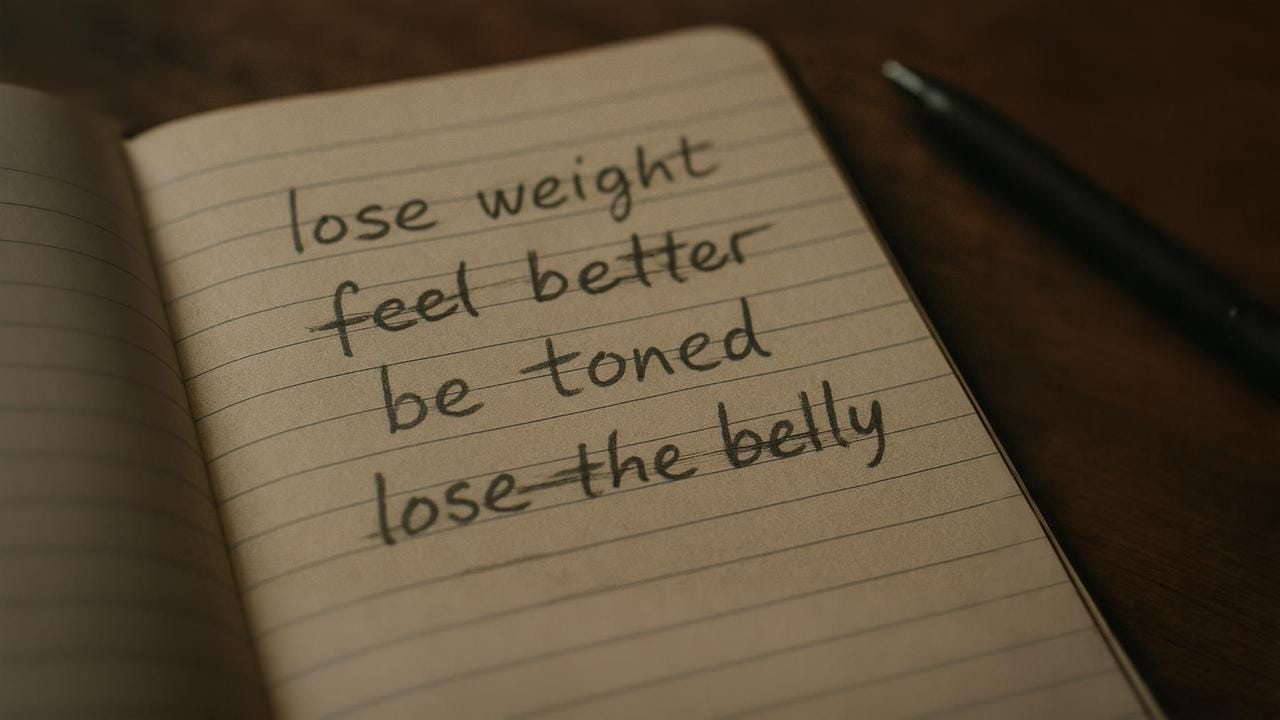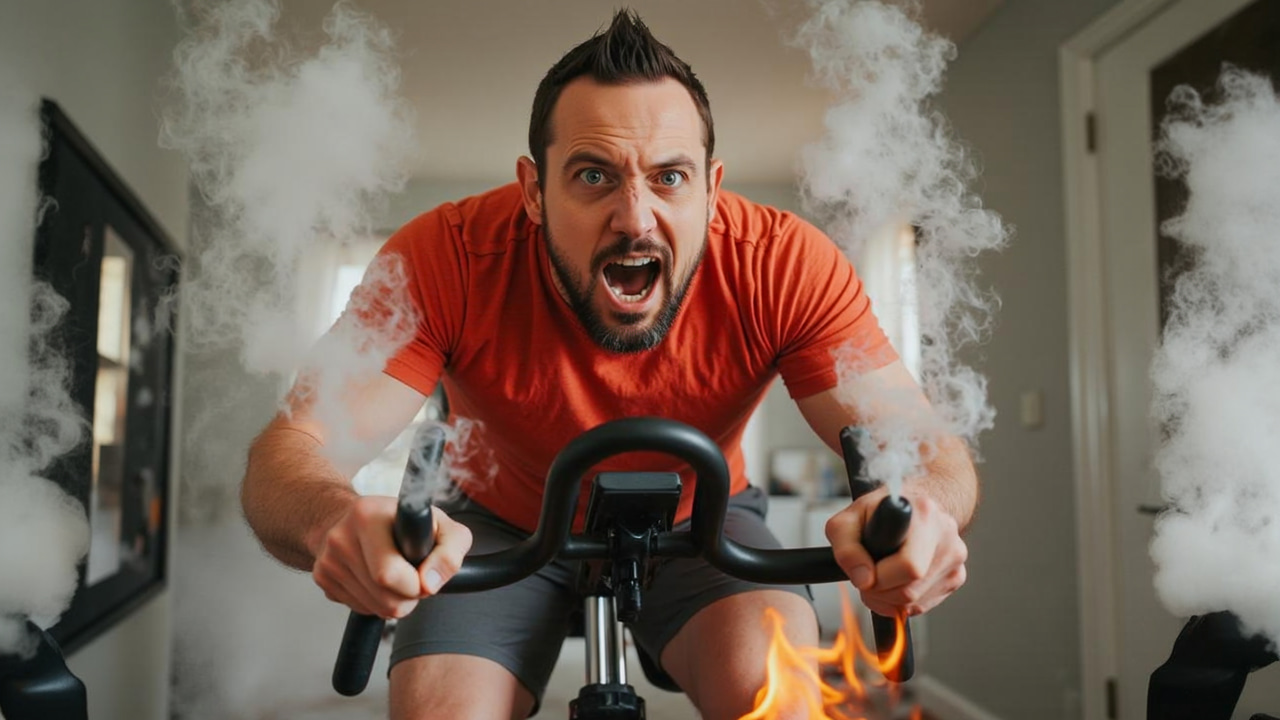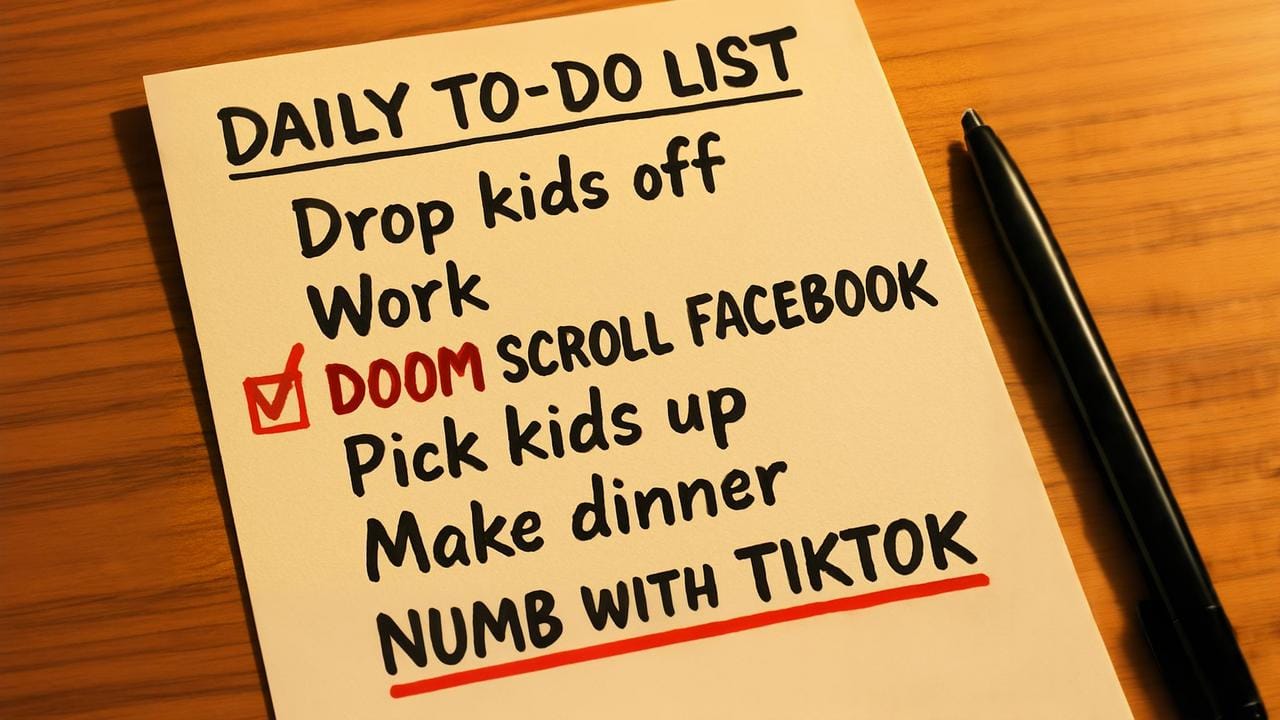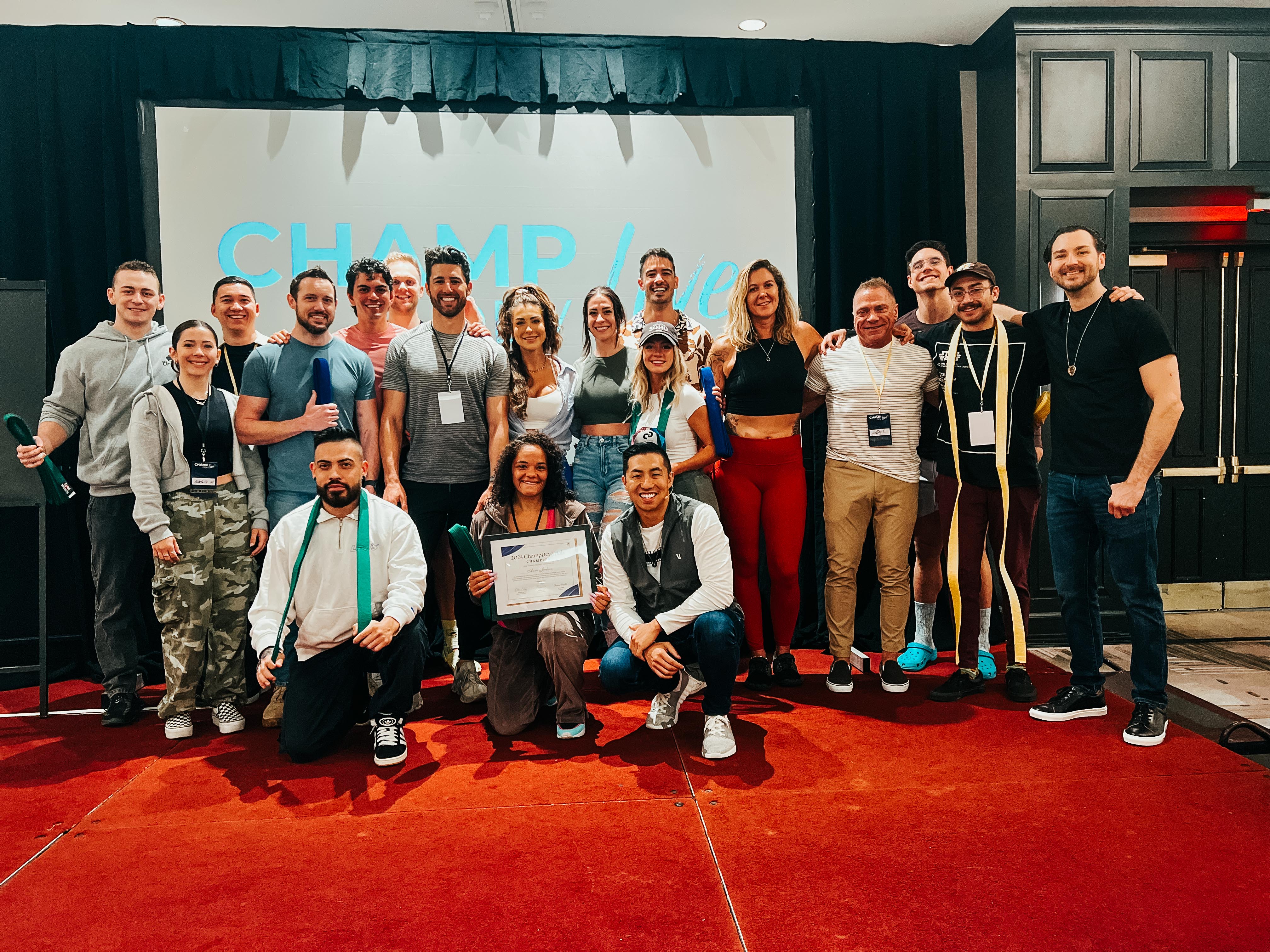Categories
practical health journalThe Practical Health Journal - September 2nd, 2025
Read this on Healthyandwholeyou.com
Read Time: 13.5 Minutes
7 Common Mistakes That Sabotage Sustainable Results
(And How to Avoid Them)
Hey Friend,
As I was running this morning, I found myself reflecting on how long I’ve been on this journey of “healthy living.”
I really got started back in 2015...so this year marks 10 years.
Ten years of trying, failing, learning, and persevering.
Today, while I still have to be intentional, living a healthy lifestyle no longer takes the kind of effort or thought it once did.
It’s just who I am now.
But that didn’t happen overnight. It took years — and a lot of mistakes — to get here.
I’m grateful for those mistakes. I see them as opportunities, not personal failures. And having made a lot of them (and coached hundreds of clients through theirs), I’ve seen patterns that sabotage results time and time again.
So in today’s Tuesday Deep Dive, I want to share 7 of the most common mistakes that derail sustainable weight loss, so you can shorten your learning curve and reach your goals faster.
Let’s dive in...
1. Not Having Clear Goals, Values, And Emotional Drivers
Every journey needs a destination.
GPS only works when you input a specific address, and the same is true for your health goals.
Too many people set vague goals like “lose weight” or “have more energy.”

But, that’s not enough to drive lasting change.
Instead, define clear, specific goals:
-
How many pounds do you want to lose?
-
What do you want to look and feel like?
-
What do you want your body to be capable of?
- What experiences do you want have with your healthy body?
But goals alone aren’t enough. You also need strong values — the traits you want to embody when life gets hard.
If your highest value being comfortable over all, you’ll choose the easy way out every time.
But if you value being someone who lives with discipline, perseverance, strength, and integrity, you’ll rise to meet your challenges instead of retreating from them. And your self confidence will grow as a result.
When you connect your goals and values to emotional drivers, you create the fuel that keeps you going when motivation fades and life gets messy.
If your only reason for starting is “I want to lose some weight” or "I want to feel better", then your journey may end as quickly as it begins.
Results that will last a lifetime cannot be driven by pain alone. To last, they must be driven by an exciting and hopeful vision of the future.
Get crystal clear on your vision. Get grounded in your values. And make it emotional enough that you’re willing to withstand anything to get there.
2. Not Tracking Body Weight, Food, And Steps
You can’t control what you don’t track.
Sustainable weight loss requires a consistent calorie deficit — eating fewer calories than you burn.
That means you need visibility into both your intake (food) and output (movement). If you’re not tracking at least your weight, steps, and food intake, you’re flying blind.
I see people sabotage themselves all the time by avoiding the scale, refusing to invest in a fitness tracker, or guessing their way through meals.
We teach our clients how to lose weight without obsessively counting every calorie or macro — but some form of consistent food tracking is still essential.

Because here’s the truth:
If you don’t track anything, you don’t know if what you’re doing is working — or what to fix when it’s not.
This is also one of the first things people stop doing after hitting their goal weight, which is exactly why they gain the weight back.
The good news?
With today’s tools — fitness trackers, Wi-Fi scales, simplified ways of gauging food intake like our Building Blocks Method — it doesn’t require much effort.
And in coaching hundreds of clients, I’ve never seen someone lose weight and keep it off without tracking these three things consistently.
Stop fighting it. Learn to track sustainably — and your results will follow.
3. Eating Only For Results (Not Sustainability)
This is the mistake our entire Healthy & Whole curriculum was built to solve.
Most diets focus only on results — zero focus on whether you’ll still want to eat that way in 3 months, 6 months, or ever again.
But if the food you’re eating to lose weight is bland, boring, inconvenient, or too restrictive… you won’t stick with it.

Here’s what sustainable eating looks like:
-
Enjoyment – You should genuinely look forward to your meals. If you dread your “healthy food,” you’ll eventually rebel.
-
Variety – Eating the same 2–3 meals forever? Burnout is inevitable. You need a deep, rotating menu of high-protein, low-stress meals.
-
Convenience – If it takes too long, requires too many ingredients, or doesn’t fit your lifestyle, it won’t last.
-
Flexibility – Life involves restaurants, travel, birthdays, holidays. You must learn to succeed in all environments — not just at home.
If you only chase short-term results, you’re setting yourself up for long-term failure.
That’s why at Healthy & Whole we build sustainability into the plan from Day 1 — not as an afterthought.
4. Doing High Intensity Cardio Specifically For Weight Loss
High-intensity cardio has many incredible benefits — but fat loss isn’t its strength.
Yes, it burns calories, but it also raises cortisol, increases appetite, and creates stress on the body.
This stress can be a very good thing and can help with your long term health and longevity if done in a balanced way and for the right reasons.
But, if you don’t love it, you won’t keep doing it. The last that you want to do is to make your weight loss results dependent on something that you do not enjoy or intend to do forever.

And once you stop? The weight often comes back.
The best exercise for fat loss? Walking.
Ideally 8k to 10k steps a day, every day.
It burns calories, lowers stress, and supports mental health. It's something you can do well into your 80's, 90's and beyond.
That’s why physique competitors prepping for shows walk — not run.
Do a reasonable amount of cardio to get the benefits you want for your heart and longevity, not for fat loss.
With our clients at Healthy & Whole, we tart with walking and strength training and building results with food our clients enjoy. And only after a client has show they can achieve consistent results with these sustainable tools do we introduce higher-intensity cardio as a cherry on top — but never the main dish.
5. Adding Without Subtracting
You want to change your health…
But you’re already busy.
We all live pretty busy and full lives these days.
But, living a healthy lifestyle does require having a certain amount of time set aside for healthy eating, daily activity, and strength training.
These are simply the requirements for success, period.
Most people decide to try again, and they take their already over crammed schedule and try to pile on walking 8-10,000 steps, meal prep, strength training, etc. on top of that overloaded schedule.

Often this overloaded schedule includes a number of things that are truly important to them, but also includes a mix of poor time management and a host of time wasting habits like doom scrolling social media, etc.
And burn out ensues.
A better and often necessary approach is to take a look at your plate and decide what can be reduced, eliminated, or delegated from your plate to make room for your new priorities.
Because let’s face it, if you want sustainable results, these priorities such as healthy food, activity, and strength training are here to stay.
They need a permanent home in your life and in your calendar / routines.
I wrote about my process or optimizing my time and priorities using the R.E.D. list method here in this past edition if you want some help with this.
But, it starts with an honest admission that in order for you to get sustainable results, some subtraction is going to be required to open up time and space for the habits and routines you will need to live for the rest of your life.
6. Being A Follower Instead Of A Student
Everyone wants to find the perfect “solution” to their weight loss struggles.
They think if they can just find the perfect diet, workout program, supplement, etc. that FINALLY the results will happen.
They forget that with virtually everything else in life that had any meaning, they had to go through a process of learning, growth, and skill development to achieve the goal.
When you decide to become a doctor, accountant, nurse, teacher, health coach, etc. you don’t just go out and read a book or an article, or do a 90 day plan then go do it.

You go to school for many months or even years, you read, you learn, you practice skills to mastery, you build experience, you master tools, and along the way you build mindsets and resilience as well.
This process takes time, but it’s a one and done process.
Once you’ve done the learning and the development to become a doctor, lawyer, nurse, coach, forklift operator, or ANYTHING, you have those skills for life and no one can take that away from you.
You are now forever someone capable of doing that thing.
For some reason, people expect that sustainable weight loss is different, but it is not.
We live in a world and culture that is not healthy or designed for health. The average person in the United States is overweight or obese and we are approaching the point where eventually over half of adults and kids will be pre-diabetic or diabetic.
We literally live in a world and society where to be healthy means to live in opposition to the culture and the environment.
This means that just like learning and developing the skill to be a doctor, we have to learn and develop the skill to live and be healthy in a world not design for optimal health and lifestyle.
Frankly, this is why I interview every person who wants to work with us at Healthy & Whole before I sign them on as a client.
Just like Harvard interviews potential new students before admitting them, I interview potential new clients to make sure they understand the process that will allow them to be successful in the long term and that they understand it won’t happen in 3 to 6 months.
The average person takes between 6 and 18+ months to fully learn and develop for sustainable results.
But here’s the thing…once you do it…you’re good.
You have the knowledge, you have the skill, you have the results. Period.
This is why you see students of ours out living their best lives long after they graduate Healthy & Whole, because they didn’t follow our diet, they were students of Healthy & Whole who became “health engineers” capable of living and thriving in an unhealthy world.
Pretty cool!
7. Trying To Do It Alone
Have you ever felt confused? Overwhelmed? Lost? Demotivated? Not sure what the best decision would be? Not seeing results and not sure why? Felt alone?
These are all very common because so many people try to conquer permanent and sustainable lifestyle change all on their own.
Again, doing this properly is almost akin to going to a trade school or climbing a mountain.
It’s EXTREMELY rare to find a person who climbed Mt. Everest or who accomplished any other huge feat all on their own.
No, they do so with the help of guides, mentors, supporters, and peers to help them along the way.
They build up a team of support and community around them so that they can get to their goal and do it faster than they ever could alone.
Coaches and mentors fill the role of providing much needed perspective and insight when you feel completely lost or overwhelmed and not sure what you need or what you are lacking.
They help you see what you aren’t seeing, shift your perspectives, provide much needed accountability, answer your questions, educate you, and so much more.
Supporters and peers provide you encouragement, additional accountability, and they give you a group to belong to that has higher standards that in fully in alignment with your goals, values, and priorities.
As humans we desire to be accepted, because acceptance helps us feel safe, valued, loved, and significant.

If we don’t surround ourselves with the right guides and the right peers an supporters who match our goals and priorities, then we will fall to the standards and priorities of others who do not align with ours.
This is why having help and support both from guides and peers is so crucially important.
Needing help and community is NOT a sign of weakness…it is a sign of wisdom.
Bringing It All Together
Here’s your 7-point action plan:
-
Clarify your goals, values, and emotional drivers. Write them down in detail. Reassess them ever 60 to 90 days to keep them strong.
-
Track your weight, steps, and food daily. Use tools that match your preferences i.e. a wifi scale, fitness tracker of your preference, and your chosen method of tracking food intake whether that be counting calories and macros or using our Building Block Method
-
Build a food lifestyle you love. Build in as much enjoyment, variety, convenience, and flexibility as you need for long term success.
-
Base your weight loss results on food, walking, and strength training. Add cardio when the time is right for health, not weight loss.
-
Create time and space for healthy habits through subtraction. Use the R.E.D. List Exercise to make room for new habits.
-
Become a student, not a follower. Give yourself 6–18 months to learn and install the sustainable habits, knowledge, and skills needed for a lifetime of successful maintenance.
-
Surround yourself with coaches and community. You’ll go further, faster — with support, and the journey will be much more enjoyable.
I’m excited for what this can do for you.
And as always — if you’re ready to stop doing it alone, I’m here to help.
— Matt
When you're ready, here's how I can help:
If you're looking to lose weight sustainably while building a flexible lifestyle that you enjoy, I can help. Apply for coaching here in the Healthy & Whole Mentorship Program.
Disclaimer: This email is provided for educational and informational purposes only and does not constitute providing medical advice or professional services. The information provided should not be used for diagnosing or treating a health problem or disease, and those seeking personal medical advice should consult with a licensed physician.



